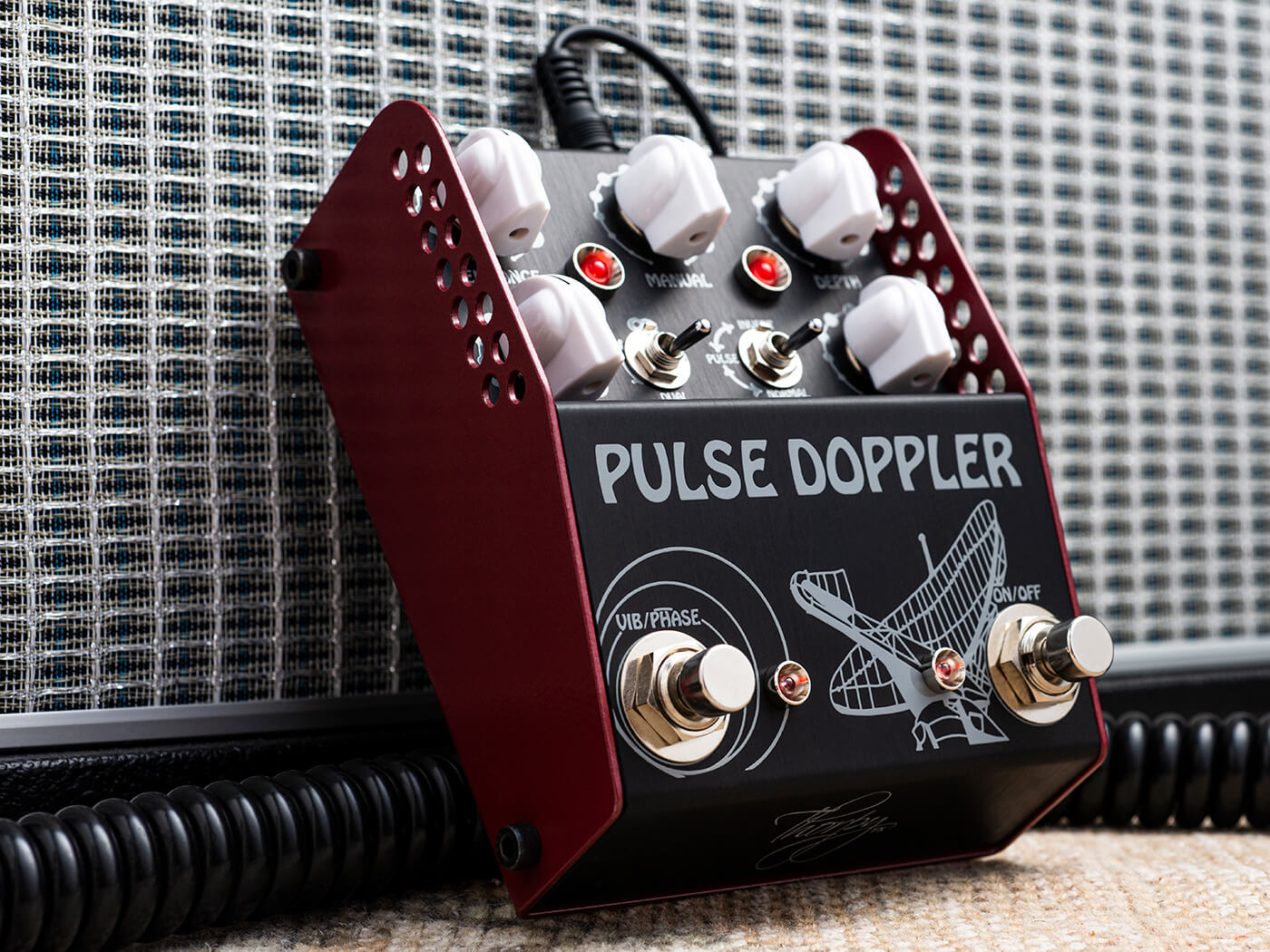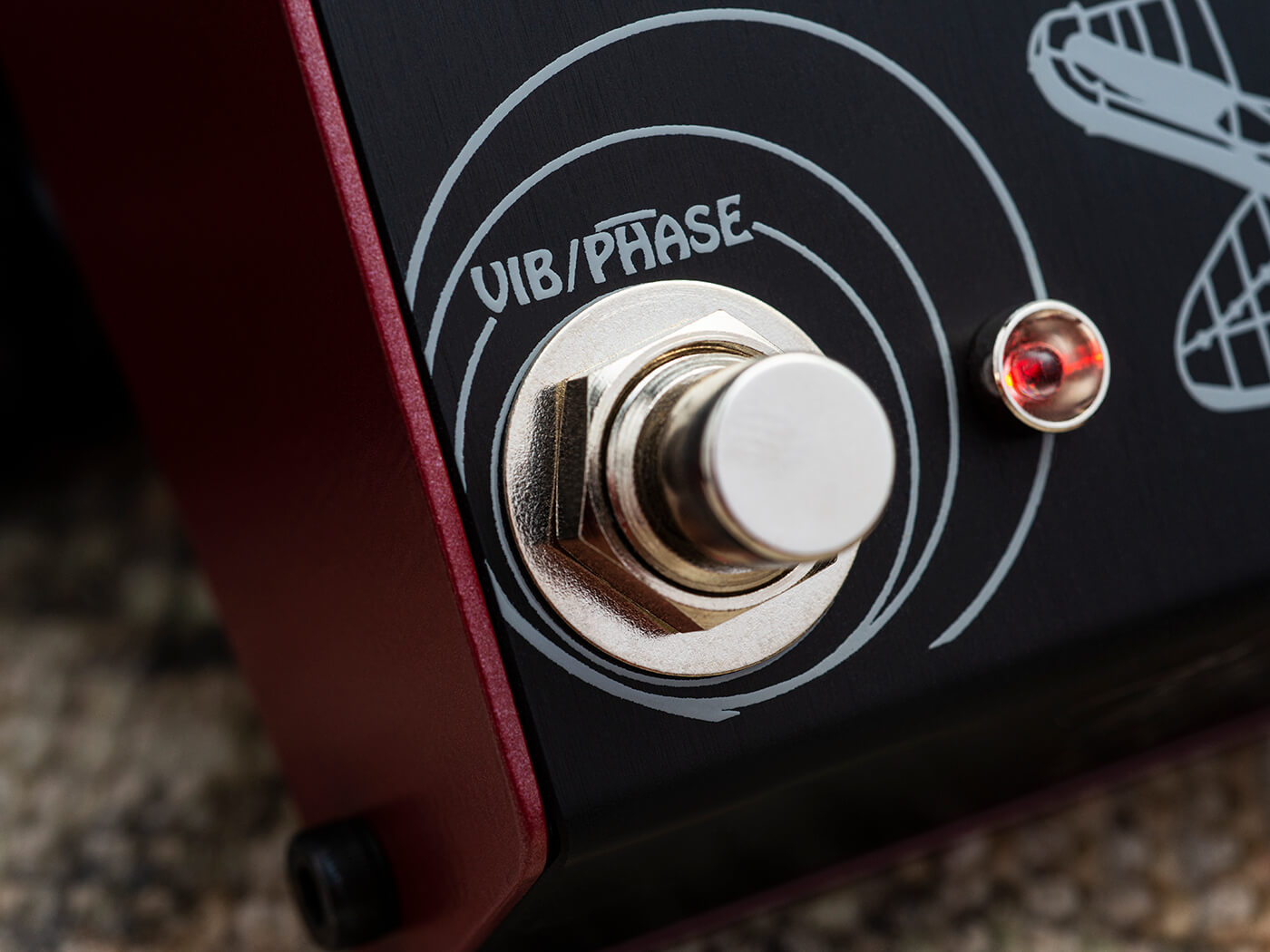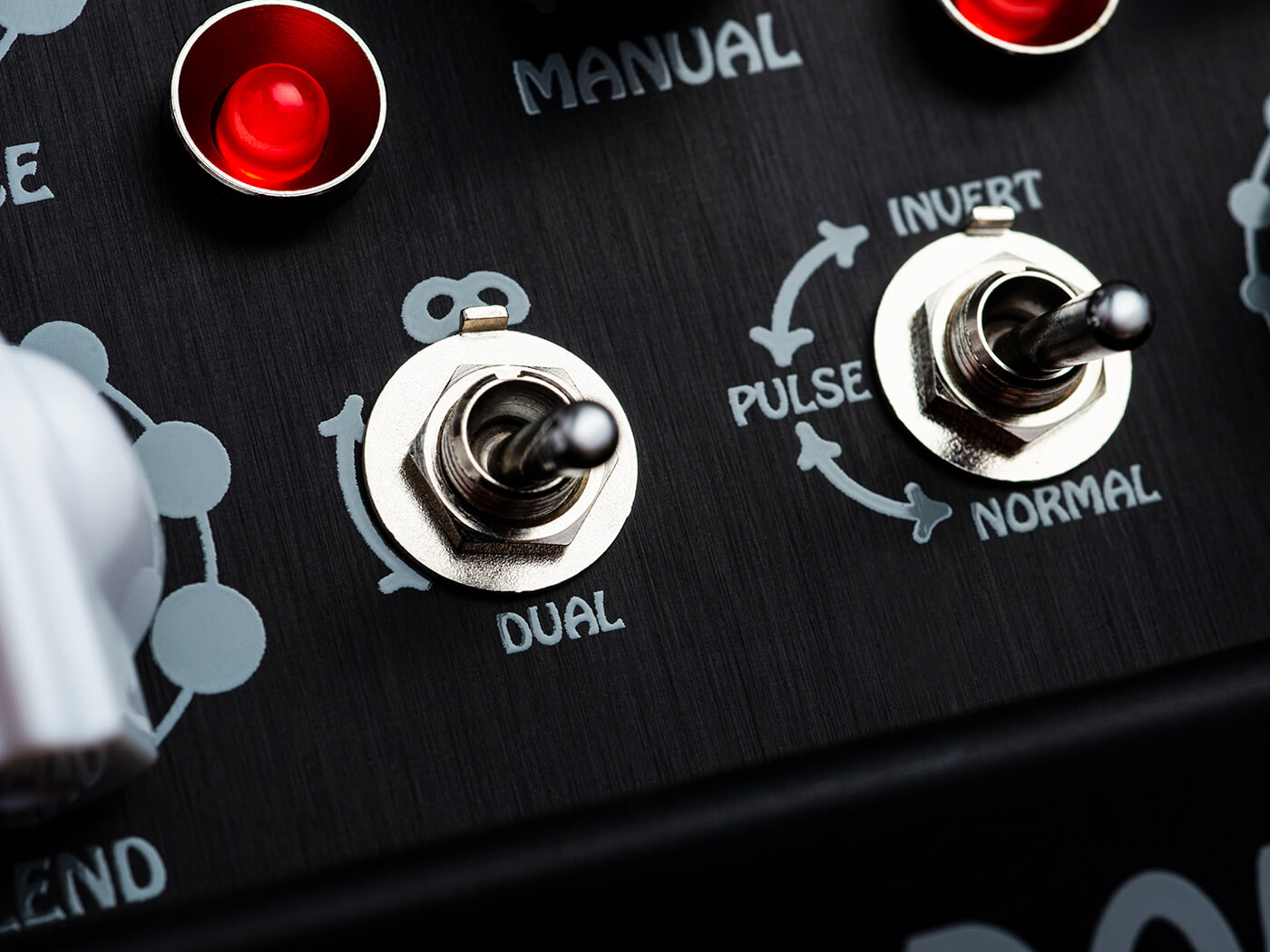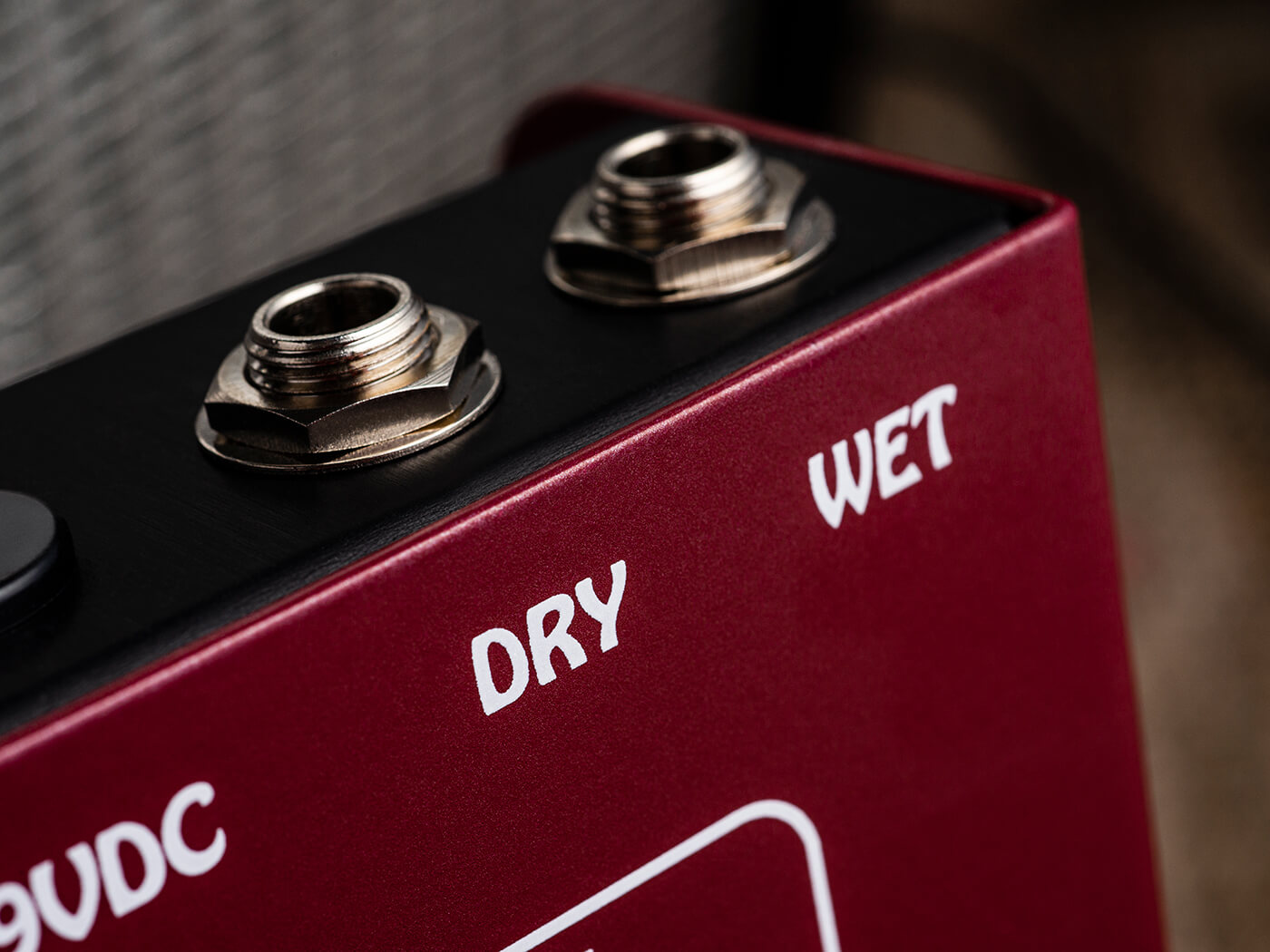Related Tags
ThorpyFX Pulse Doppler review: The Lovetone Doppelganger reimagined
The latest ThorpyFX reboot of a Lovetone classic turns down the distortion and cranks up the modulation – but that doesn’t make the ride any less wild.

Review Overview
Our rating
8
Our verdict
The arrival of a new black-boxed device from ThorpyFX is big news for stompbox connoisseurs. This moody look is the uniform of the company’s unofficial ‘Lovetone MkII’ range, based on some of the most influential boutique pedals ever made… and the third in the series is the most ambitious yet.
Created in collaboration with original Lovetone designer Dan Coggins, the Pulse Doppler is inspired by the Doppelganger phaser/vibrato of 1995. But while the ThorpyFX Field Marshal and Bunker were careful not to stray too far from Coggins’ original circuits, this one has apparently been redesigned from the ground up. Is that good news or bad? Read the rest of the review before you answer that…

First, the basics. This is an analogue twin-notch phaser with a wide range of operating modes to cover numerous phasing tones plus pitch-wobbling vibrato, pure tremolo and various points in between. It’s a lot smaller and more pedalboard-friendly than the Doppelganger, not to mention a whole lot more affordable, but it hardly skimps on complexity.
Normally at this point we’d run through all the controls with a brief summary of what each one is supposed to do. That’s not really feasible here. They’re all so interactive, the knobs behaving so differently depending on where the switches are set, that we might be better off just cracking on with the testing.

In use
Half an hour after sparking up this pedal for the first time, we were on the phone to Adrian Thorpe to ask him what was wrong with it. Nothing, it turned out… but the Pulse Doppler is very much not a plug-and-play phaser. By the time you read this there should be some sample settings on the ThorpyFX website; we urge you to study them before you attempt to fly this thing solo.
Anyway, there is at least one ‘straight’ phase-shifting effect in here somewhere. It’s very Doppelganger-esque and very pretty, with a deeply chewy texture and a throbby volume-bump towards the low end of the sweep that can be tamed by flipping to ‘invert’ mode.
The best thing about this sound is that you can adjust the frequency range of the swirl in a way that dramatically alters its tonal character; the worst thing is that all of this happens between 11 and 12 o’clock on the ‘manual’ knob – stray outside of that zone and the effect virtually dies.

Tremolo’s up next, with an intense yet naturally rising and falling waveform that’s immediately likeable. This time it’s the depth control that needs careful management – the modulation vanishes anywhere below one o’clock and starts to get motorboaty if you push it beyond three – but again you have some interesting scope for tweaking.
There’s plenty more to explore. Cranking the ‘enhance’ knob can bring some pew-pew synth effects and, yes, there’s pitch vibrato too, which sounds lovely as long as you have everything set just so. And that, really, is the Pulse Doppler in a nutshell. It’s a complicated pedal that’s a bit of a minefield to navigate, but with just enough sonic treasures to make the journey worthwhile.

Key Features
- PRICE £264.99
- DESCRIPTION Phaser/vibrato/tremolo pedal, made in the UK
- CONTROLS Enhance, manual, depth, blend, rate; dual/figure-of-eight and normal/pulse/invert toggle switches, bypass and vibrato/phaser footswitches
- FEATURES Wet and dry outputs, buffered bypass, powered by 9-volt mains supply only (not supplied)
- DIMENSIONS 130 x 108 x 57mm
- CONTACT thorpyfx.com
Like this? Try these
- EarthQuaker Devices Grand Orbiter V3 £205
- Old Blood Noise Endeavors Visitor £199
- Universal Audio Astra £355
